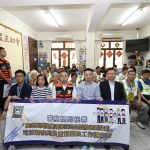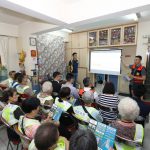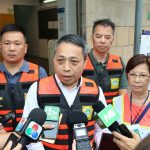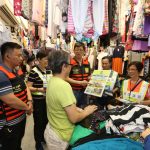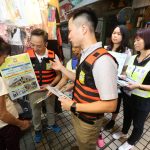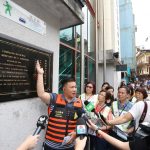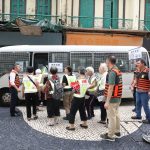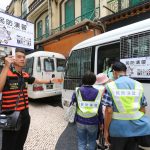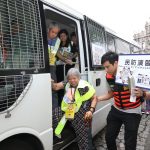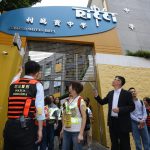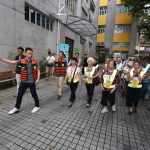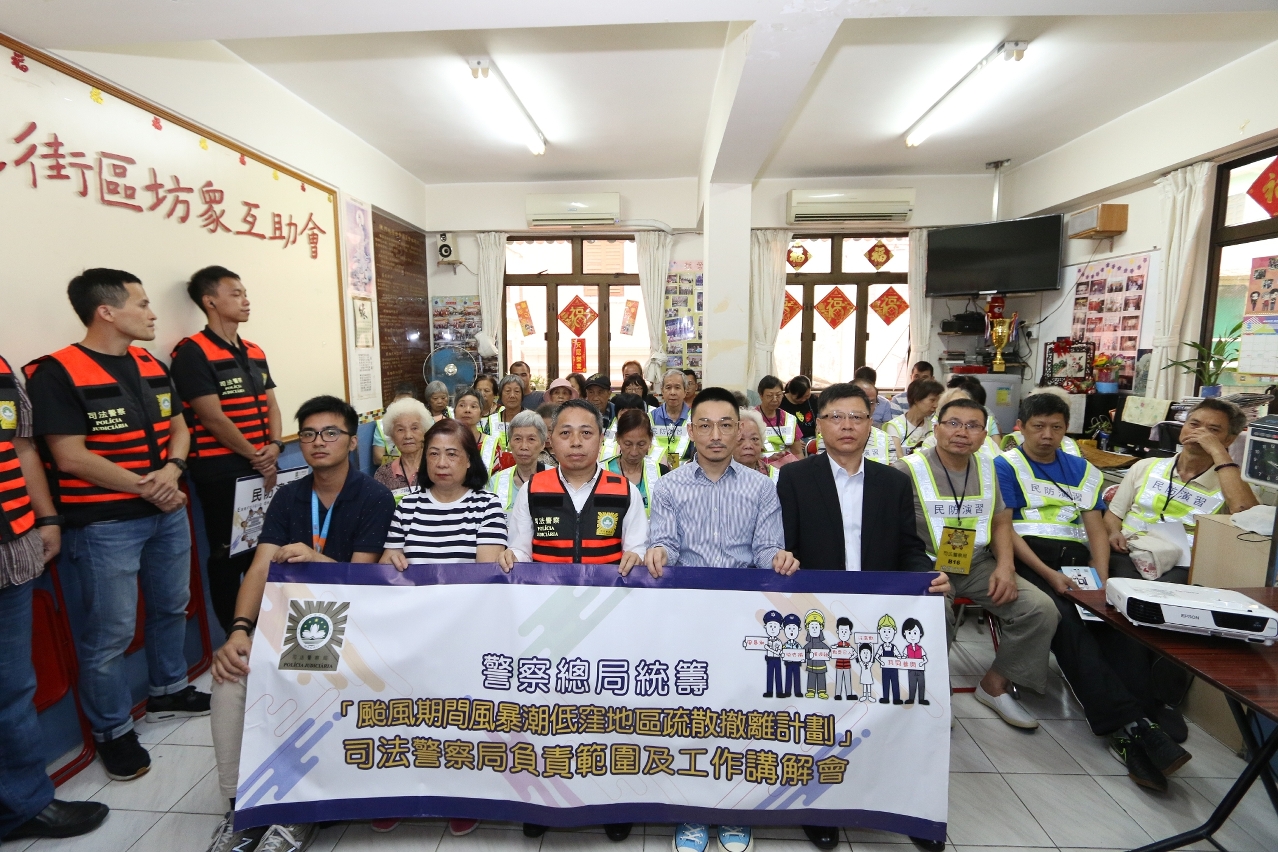 Judiciary Police and the Social Welfare Bureau, under the coordination of the Unitary Police Service, jointly organised “Storm Surge Evacuation Plan in Low-lying Areas during Typhoon” workshop and stimulation drill.
Judiciary Police and the Social Welfare Bureau, under the coordination of the Unitary Police Service, jointly organised “Storm Surge Evacuation Plan in Low-lying Areas during Typhoon” workshop and stimulation drill.
Storm surge evacuation workshop and simulation drill
jointly organised by Judiciary Police and Social Welfare Bureau
Typhoon season is approaching, Judiciary Police and the Social Welfare Bureau, under the coordination of the Unitary Police Service, jointly organised “Storm Surge Evacuation Plan in Low-lying Areas during Typhoon” workshop and stimulation drill, which invited members of the public to take part. Its aims were to strengthen awareness of the community towards precautionary and safety measures for disasters, so that members of the public could gain an understanding on how to safely and orderly evacuate when a storm surge hit the city, in addition, to reinforce the response and coordination abilities of Judiciary Police evacuation team and collect public feedback on the evacuation process for optimal results.
Reinforcing public knowledge on the evacuation plan
The workshop and the drill took place on 26 May 2019 at Associação de Mútuo Auxílio dos Moradores das Ruas de S. Domingos, dos Mercadores e Vias Circundantes. During the workshop, representatives of Judiciary Police explored the evacuation plan, evacuation routes, various categories of storm surge, warning and broadcasting systems and audio warning signals in detail. The importance for the public to follow police instruction to evacuate quickly and orderly was also emphasised and citizens were encouraged to take precautions against disasters in advance and foster the spirit of neighbourhood assistance in the case of unexpected events. Meanwhile, the representative of the Social Welfare Bureau introduced shelter centres across Macao, including their facilities, resources and opening times, in addition, the locations of assembly points for people in need and the emergency evacuation staying points in the workshop.
In attendance of the workshop were representatives of Judiciary Police, including Head of Operation Support Division Mr. Mok Heong Io, evacuation team, Community Policing and Public Relations Division, members of the “Friends of Crime Prevention Team for Residential Buildings”. Others include Social Welfare Bureau’s Acting Head of Emergency Resettlement Unit, Mr. Kuan Chi Man, Associação de Mútuo Auxílio dos Moradores das Ruas de S. Domingos, dos Mercadores e Vias Circundantes do UGAMM, Property Management Business Association Macao, Macau Real Estate Management Professional Technicians Association and 40 citizens.
Enhancing coordination in simulation drill
Judiciary Police carried out a drill after the workshop to simulate Macao being hit by a storm surge and civil protection entities activated the evacuation plan as directed. Judiciary Police executed evacuation at specific areas, disseminated leaflets carrying disaster prevention measures, explained the locations and facilities of shelter centres, evacuation routes, in addition, assisted citizens in need to designated assembly points or shelter centres.
The workshop and the simulation drill had effectively reinforced public understanding of the evacuation process and precautions especially on how they could safely and quickly move to shelter centres when storm surge hit Macao. Furthermore, emergency response and coordination abilities of Judiciary Police evacuation team, communication and cooperation between the police and local associations had yielded positive results. Finally, Judiciary Police collected the opinions of the participants in the drill which will be used in our internal review to optimise the process of the evacuation plan.


